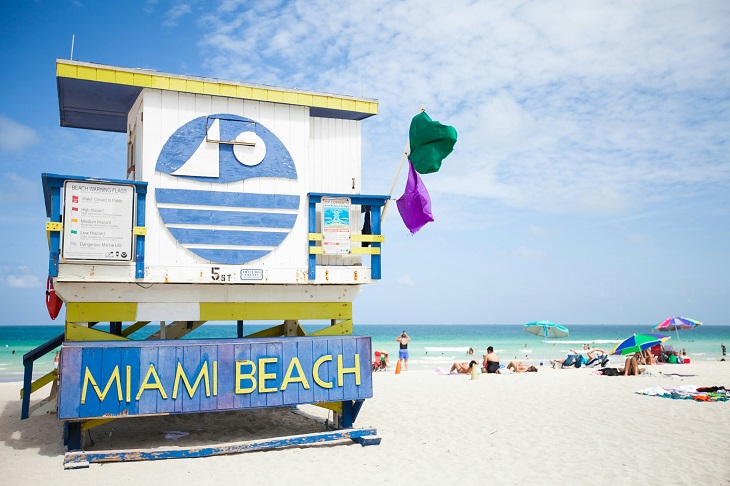Embarking on a road trip is an exhilarating adventure for many as it gives you the freedom to explore new destinations and create lasting memories. However, for individuals with disabilities or limited mobility, the prospect of planning a road trip is daunting due to accessibility concerns.
Fortunately, with careful planning and consideration, handicapped drivers can enjoy fulfilling memorable road trips. In this guide, we’ll explore the accessibility needs, how to choose accessible destinations, accessible travel resources, adapting vehicles for accessibility, planning your route, accommodation, and packing essentials.
Understanding Accessibility Needs
Before diving into trip planning, establish the unique accessibility needs of handicapped drivers. Accessibility encompasses a wide range of factors, including wheelchair accessibility, parking availability, restrooms, and accommodation facilities.
For instance, let’s consider the made-up case of Sarah, as an example. Sarah is a wheelchair user who is planning a road trip with her friends. She requires wheelchair-accessible accommodation with roll-in showers and widened doorways to ensure her comfort and independence during the trip. Additionally, she needs to research and select destinations with wheelchair-accessible attractions and transportation options to ensure she can explore and enjoy her surroundings without limitations.
Additionally, factors such as road conditions, terrain, and local regulations can significantly impact the feasibility of a road trip for individuals with disabilities. For Sarah, this means carefully planning her route to avoid steep inclines, rough terrain, or areas with limited accessibility features.
By understanding these needs upfront, Sarah can tailor her trip planning to ensure a smooth and enjoyable experience for everyone involved. This may involve reaching out to accommodation providers and attractions in advance to confirm accessibility features and make any necessary arrangements.
In Sarah’s case, understanding her accessibility needs upfront allows her to plan a road trip that caters to her specific requirements, ensuring that she can fully participate and enjoy the journey with her friends. By considering these factors and taking proactive steps to address accessibility challenges, Sarah can embark on a road trip filled with adventure, discovery, and unforgettable experiences.

Choosing Accessible Destinations
When planning a road trip for handicapped drivers, selecting accessible destinations is key to ensuring a smooth and enjoyable journey. Fortunately, there is a growing awareness of accessibility needs, and many destinations around the US now offer handicap-friendly attractions and facilities. Let’s explore some examples of accessible destinations:
National Parks with Wheelchair-Accessible Trails
National parks are renowned for their natural beauty and diverse landscapes, and many have made efforts to improve accessibility for visitors with disabilities.
For example, Yosemite National Park in California offers wheelchair-accessible trails, such as the Lower Yosemite Falls Trail, Sentinel Meadow Cook’s Meadow Loop Trail, Glacier Point Trail, and Mirror Lakek Paved Trail. Similarly, Acadia National Park in Maine features the paved Ocean Path Trail, offering breathtaking ocean views and easy access for wheelchair users. They also have an inclusive experience where you can take wheelchair-accessible carriages.
Cities with Accessible Public Transportation Systems
Urban destinations often provide accessible public transportation options, making it easier for handicapped drivers to navigate city streets and explore local attractions.
For instance, London, England, is known for its extensive public transportation network, including buses and trains equipped with wheelchair ramps and designated seating areas. The city also offers accessible attractions, such as the British Museum, which provides wheelchair-accessible entrances and elevators to access its exhibits.
Beach Resorts with Accessible Facilities
Many beach resorts around the US have recognized the importance of inclusivity and have gone to great lengths to implement accessibility features, ensuring that all guests, including those with disabilities, can fully enjoy the beach experience. One exemplary destination that stands out for its commitment to accessibility is Clearwater Beach in Florida and Surfside Beach in South Carolina.
Clearwater Beach offers a range of amenities and services designed to cater to individuals with disabilities. At the heart of its accessibility initiatives lies the wheelchair-accessible boardwalk where individuals can take in the stunning views of the shoreline but also ensure that individuals with mobility impairments can navigate the beach area safely and comfortably.
Cultural Sites with Accessibility Features
Cultural and historical sites often provide accessibility accommodations to ensure that all visitors can experience their rich heritage. For example, the Smithsonian Institution in Washington, D.C., offers wheelchair-accessible entrances, elevators, and ramps at its museums and galleries, including the National Air and Space Museum and the National Museum of American History.
By researching destinations in advance and reaching out to local tourism offices, handicapped drivers can gain valuable insights into accessibility features and accommodations available at their chosen destinations.
Whether it’s exploring the natural wonders of a national park, navigating the bustling streets of a vibrant city, or relaxing on a wheelchair-accessible beach, there are countless accessible options for road trips that cater to the diverse interests and needs of individuals with disabilities.
Utilizing Accessible Travel Resources
In recent years, there has been a significant increase in resources aimed at making travel more accessible for individuals with disabilities. Online platforms and mobile apps now offer comprehensive information on accessible hotels, restaurants, attractions, and transportation options.
Websites like AccessibleGO and WheelMap provide invaluable resources for handicapped drivers, offering reviews, recommendations, and accessibility ratings for various travel destinations. By leveraging these resources, you can plan your road trip with confidence, knowing that you have access to the information you need to make informed decisions.
Adapting Vehicles for Accessibility
For handicapped drivers, having a properly adapted vehicle is essential for a safe and comfortable road trip experience. Modifications such as wheelchair lifts, hand controls, and adaptive driving aids can significantly enhance accessibility and independence on the road.
Before embarking on your trip, ensure that your vehicle is equipped with the necessary adaptations to accommodate your specific needs. Additionally, regular maintenance and safety checks are crucial to ensuring that your vehicle remains reliable throughout your road trip.
Planning Accessible Routes
When mapping out your road trip itinerary, prioritizing accessible routes is important. Opt for highways and roads with well-maintained surfaces and accessible rest stops along the way. Take into account factors, such as terrain, elevation changes, and weather conditions that may affect accessibility.
Lastly, consider scheduling regular rest breaks to prevent fatigue and allow ample time for relaxation. Planning your route strategically can minimize potential obstacles and ensure a smooth and enjoyable road trip for everyone involved.
Making Accommodation Arrangements
Finding handicap-friendly accommodation is an essential aspect of planning an accessible road trip. Many hotels and resorts now offer accessible rooms equipped with features, such as roll-in showers, grab bars, and widened doorways.
Be sure to specify any specific accessibility requirements when booking accommodation to ensure that your needs are met. Additionally, consider alternative lodging options, such as vacation rentals or accessible campsites for a unique and immersive experience.
Packing Essentials
When packing for your road trip, ensure you have all essential items to enhance accessibility and comfort. It is not just about bringing mobility aids like wheelchairs or walkers, assistive devices, and personal care items for convenience. Individuals can’t forget snacks, water, and medications to stay nourished and hydrated throughout their road trip.
Prepare a comprehensive packing list to avoid overlooking any necessities. Additionally, pack an emergency kit with first-aid supplies and roadside assistance items. If your vehicle has accessibility adaptations, ensure they’re properly installed and functional. Communication devices like cell phones are crucial for staying connected and accessing emergency services, so ensure car chargers are packed too. Lastly, include entertainment and comfort items, such as books and travel pillows for a more enjoyable trip.

Navigating Challenges
Despite careful planning, unexpected challenges may arise during your road trip. Whether it’s a road closure, inclement weather, or a mechanical issue with your vehicle, it’s essential to remain flexible and adaptable in the face of adversity.
Keep emergency contacts handy and have a contingency plan in place for unforeseen circumstances. Contingency plans can include roadside assistance service that is covered by insurance and making a list of hospitals, urgent care centers, or pharmacies along the road trip route. Remember that asking for assistance when needed is not a sign of weakness but rather a proactive step toward ensuring your safety and well-being on the road.
Get Ready for a Road Trip
Planning an accessible road trip for handicapped drivers requires careful consideration and preparation, but the rewards are well worth the effort. By understanding accessibility needs, choosing accessible destinations, utilizing travel resources, and adapting vehicles for accessibility, you can enjoy a fulfilling and memorable journey on the open road.
With the right planning and mindset, handicapped drivers can experience the freedom and adventure of road-tripping while creating cherished memories that last a lifetime. So pack your bags, hit the road, and embark on the ultimate accessible road trip! Remember, with proper preparation and a positive attitude, the journey ahead is not just about reaching your destination but also about the enriching experiences and connections made along the way.
Featured image by Dino Reichmuth on Unsplash.



